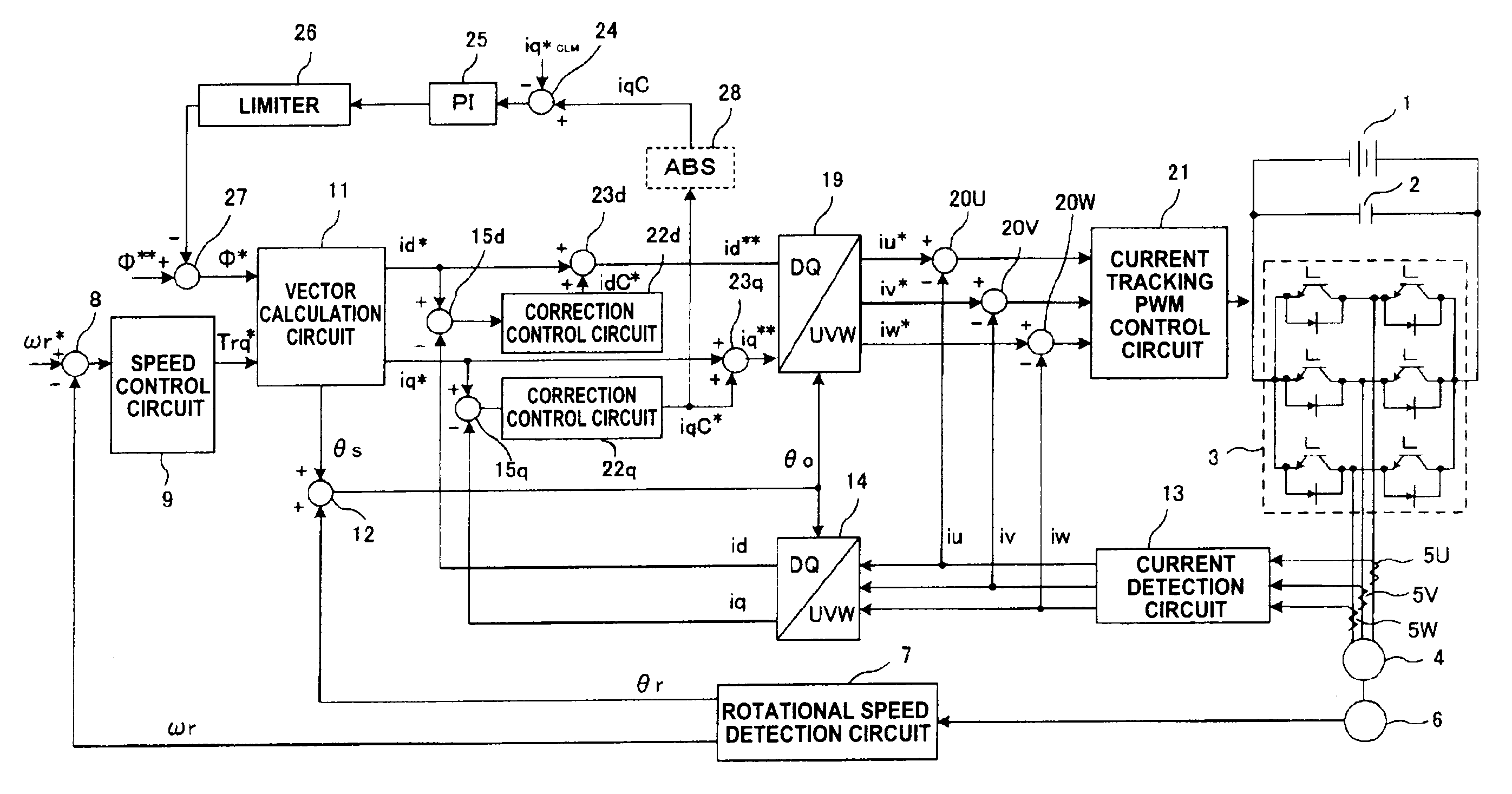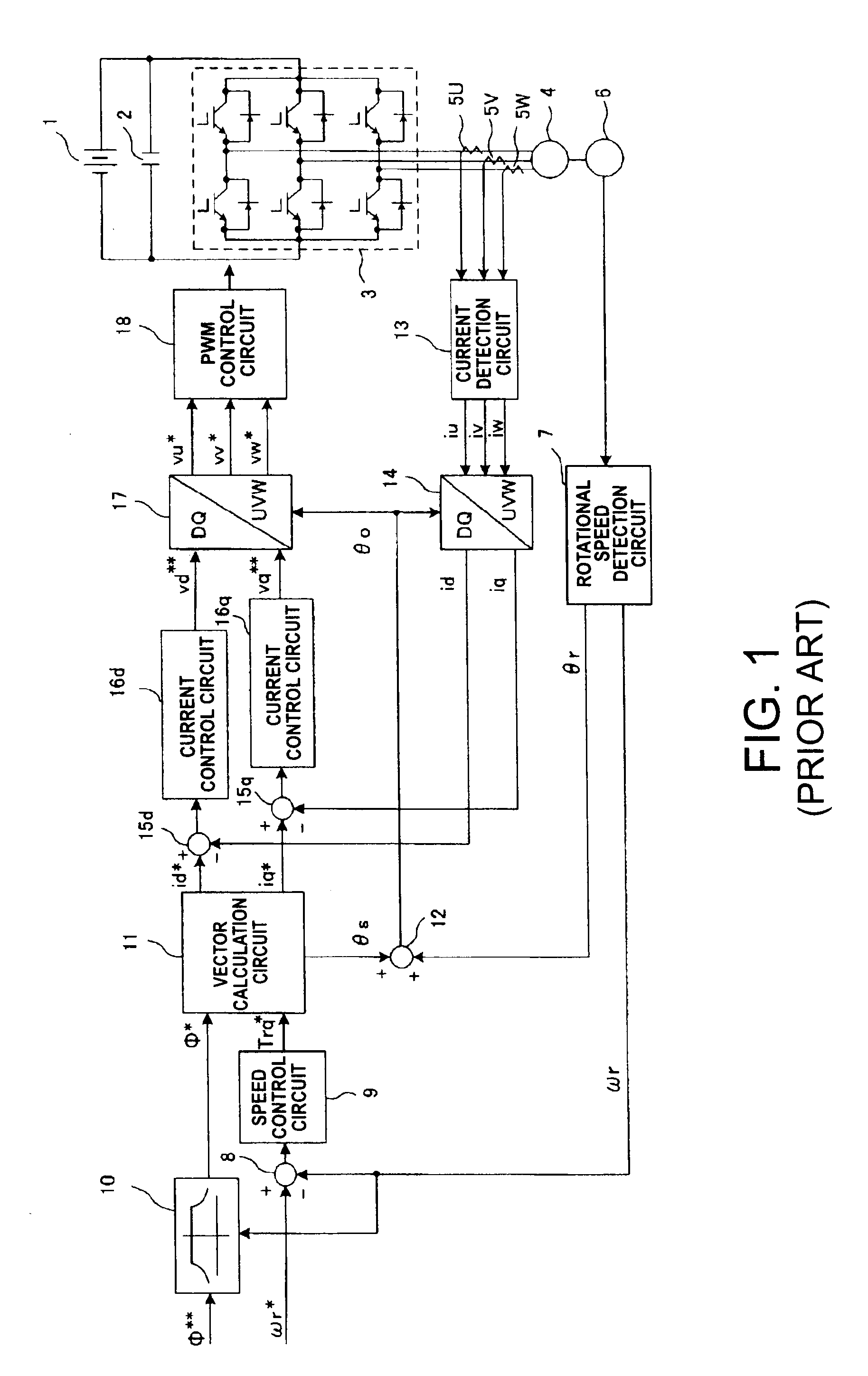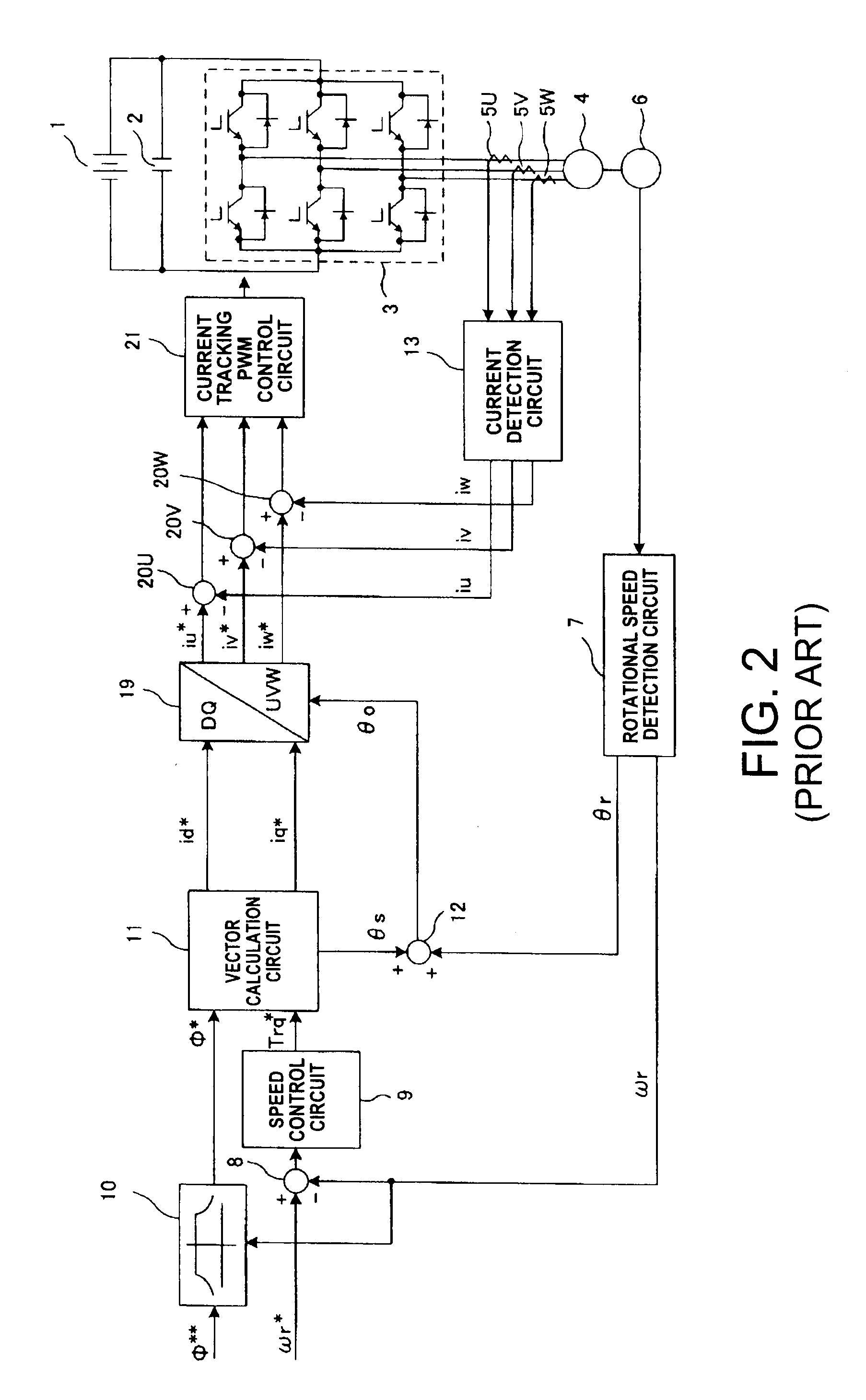Inverter control device and ac motor control device using this inverter control device
a technology of inverter control device and control device, which is applied in the direction of motor/generator/converter stopper, dynamo-electric gear control, dynamo-electric converter control, etc., and can solve the problems of inability to use current control, reducing operating efficiency, and restricting the output capacity of the motor
- Summary
- Abstract
- Description
- Claims
- Application Information
AI Technical Summary
Benefits of technology
Problems solved by technology
Method used
Image
Examples
Embodiment Construction
[0032]An embodiment of the present invention is described below with reference to the drawings.
[0033]FIG. 3 is a layout diagram of an AC motor control device wherein an inverter control device according to an embodiment of the present invention is applied to control of a motor. In FIG. 3, elements that are the same as elements shown in FIG. 1 and FIG. 2 are given the same reference symbols and the description thereof is not repeated. Correction control circuits 22d, 22q, adders 23d, 23q, a subtractor 24, a flux weakening control circuit 25, a limiter 26, a subtractor 27 and absolute value circuit 28 are newly provided.
[0034]The correction control circuits 22d, 22q are provided in order to eliminate the steady deviation (or steady-state error): the correction control circuit 22d amplifies the current deviation (id*-id) of the current reference id* that is input to the subtractor 15d and the output current id that is output from the inverter 3, and outputs the result to the adder 23d....
PUM
 Login to View More
Login to View More Abstract
Description
Claims
Application Information
 Login to View More
Login to View More - R&D
- Intellectual Property
- Life Sciences
- Materials
- Tech Scout
- Unparalleled Data Quality
- Higher Quality Content
- 60% Fewer Hallucinations
Browse by: Latest US Patents, China's latest patents, Technical Efficacy Thesaurus, Application Domain, Technology Topic, Popular Technical Reports.
© 2025 PatSnap. All rights reserved.Legal|Privacy policy|Modern Slavery Act Transparency Statement|Sitemap|About US| Contact US: help@patsnap.com



